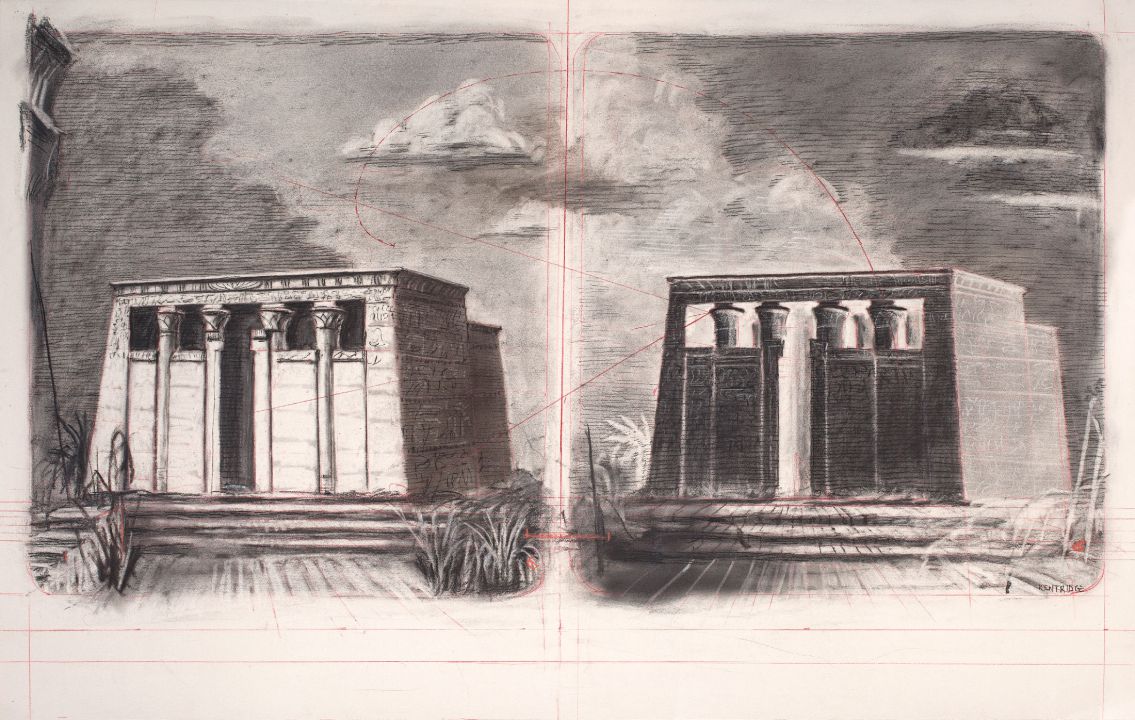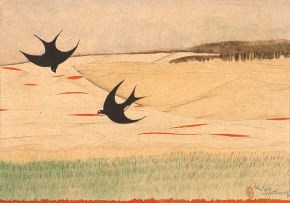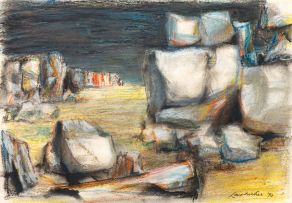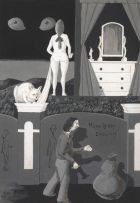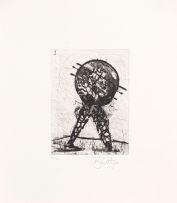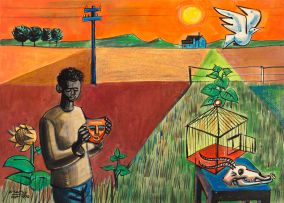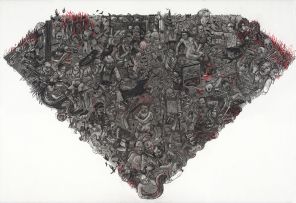Important South African and International Art, Decorative Arts & Jewellery
Live Auction, 5 March 2018
Art: Evening Sale
About this Item
signed
Notes
William Kentridge's interest in the iconography of Ancient Egypt originated out of an invitation to produce Mozart's fairy-tale opera, The Magic Flute (1791), for La Monnaie, the federal opera house in Brussels, Belgium. Kentridge is not the first artist to create sets for this storied opera. Precursors include Marc Chagall, David Hockney and Karl Friedrich Schinkel, a Prussian neo-classicist whose Egyptian-themed 1816 set designs Kentridge drew from.
This paired drawing depicts two differently rendered images of the Temple of Khnum, a red sandstone Greco-Roman structure that was one of the last Egyptian temples ever built. It was designed to resemble a much earlier temple on the site from the Ptolemaic period and is decorated with reliefs and inscriptions by many Roman emperors. The temple is dedicated to the ram-headed god of creation, Khnum, who is believed to have fashioned mankind out of Nile clay using a potter's wheel. The temple is located in the middle of modern town of Esna, near Luxor, about 800km south of Cairo.
This drawing's pairing of positive and negative depictions of the same architectural structure bears out a central theme identified by Kentridge in Mozart's enlightenment opera. "The opera is about the difference between darkness and light," elaborated Kentridge in 2007. "Sarastro [a high priest in the opera] becomes the sun; we are left with blinding light. But in cinema blinding light means there is no more film in the projector; one is left without any meaning. There is a need for both darkness and light for meaning to be made."1
Although best known for his charcoal drawings of Johannesburg and its surrounding industrial landscapes, this lot is not disconnected from Kentridge's conceptual interest in civilizational ruin. Its iconography also slots into a body of post-2004 work occupied with Ancient Egypt. In 2010 Kentridge was invited to exhibit at the Louvre, Paris. His exhibition Carnets d'Egypte was conceived especially for the Egyptian Room and consisted of new drawings, collages and books shown alongside a selection of drawings from the Louvre's collections.
1. Annie Midgette. (2007) 'Artist's Video Adds Magic to 'Flute'', New York Times, 9 April. Page E1
Literature
Bronwyn Law-Viljoen (ed.) (2007)William Kentridge: Flute. South Africa: David Krut Publishing. Illustrated in colour on page 49.
